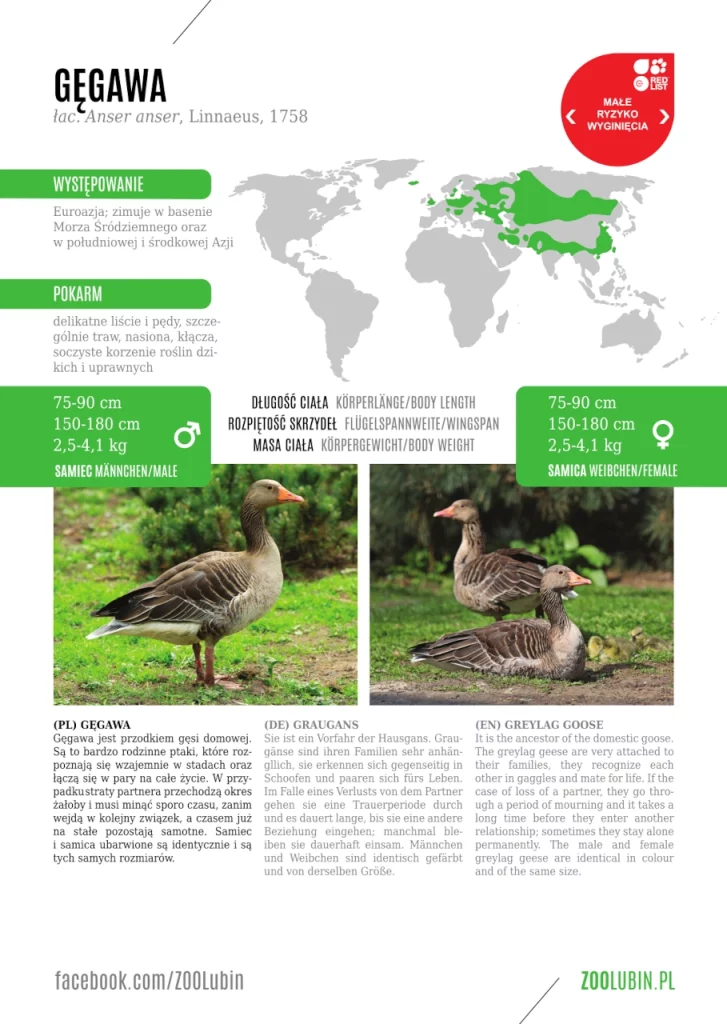
POBIERZ ETYKIETĘ GATUNKOWĄ – PLIK PDF (rozmiar 2576 KB)
Gęgawa (PL)
łac. Anser anser, Linnaeus, 1758
Gęgawa jest przodkiem gęsi domowej. Są to bardzo rodzinne ptaki, które rozpoznają się wzajemnie w stadach oraz łączą się w pary na całe życie. W przypadku straty partnera przechodzą okres żałoby i musi minąć sporo czasu, zanim wejdą w kolejny związek, a czasem już na stałe pozostają samotne. Samiec i samica ubarwione są identycznie i są tych samych rozmiarów.
Występowanie: Eurazja; zimuje w basenie Morza Śródziemnego oraz w południowej i środkowej Azji
samiec / samica
Długość ciała: 75–90 cm
Rozpiętość skrzydeł: 150–180 cm
Masa ciała: 2,5–4,1 kg
Graugans (DE)
łac. Anser anser, Linnaeus, 1758
Sie ist Vorfahrin der Hausgans. Graugänse sind ihren Familien sehr anhänglich; sie erkennen sich gegenseitig in Schoofen und binden sich in Paaren fürs Leben. Im Falle eines Verlusts des Partners gehen sie eine Trauerzeit durch und es dauert lange, bis sie eine andere Beziehung eingehen; manchmal bleiben sie dauerhaft einsam. Männchen und Weibchen sind identisch gefärbt und von der gleichen Größe.
Vorkommen: Eurasien; Winter im Mittelmeerraum sowie in Süd- und Zentralasien
Männchen / Weibchen
Körperlänge: 75–90 cm
Flügelspannweite: 150–180 cm
Körpermasse: 2,5–4,1 kg
Greylag goose (EN)
łac. Anser anser, Linnaeus, 1758
It is the ancestor of the domestic goose. Greylag geese are very attached to their families; they recognize each other in gaggles and mate for life. In the case of the loss of a partner, they go through a period of mourning and it takes a long time before they enter another relationship; sometimes they stay alone permanently. Male and female greylag geese are identical in colour and of the same size.
Distribution: Eurasia; winters in the Mediterranean Basin and in southern and central Asia
male / female
body length: 75–90 cm
wingspan: 150–180 cm
body mass: 2,5–4,1 kg
